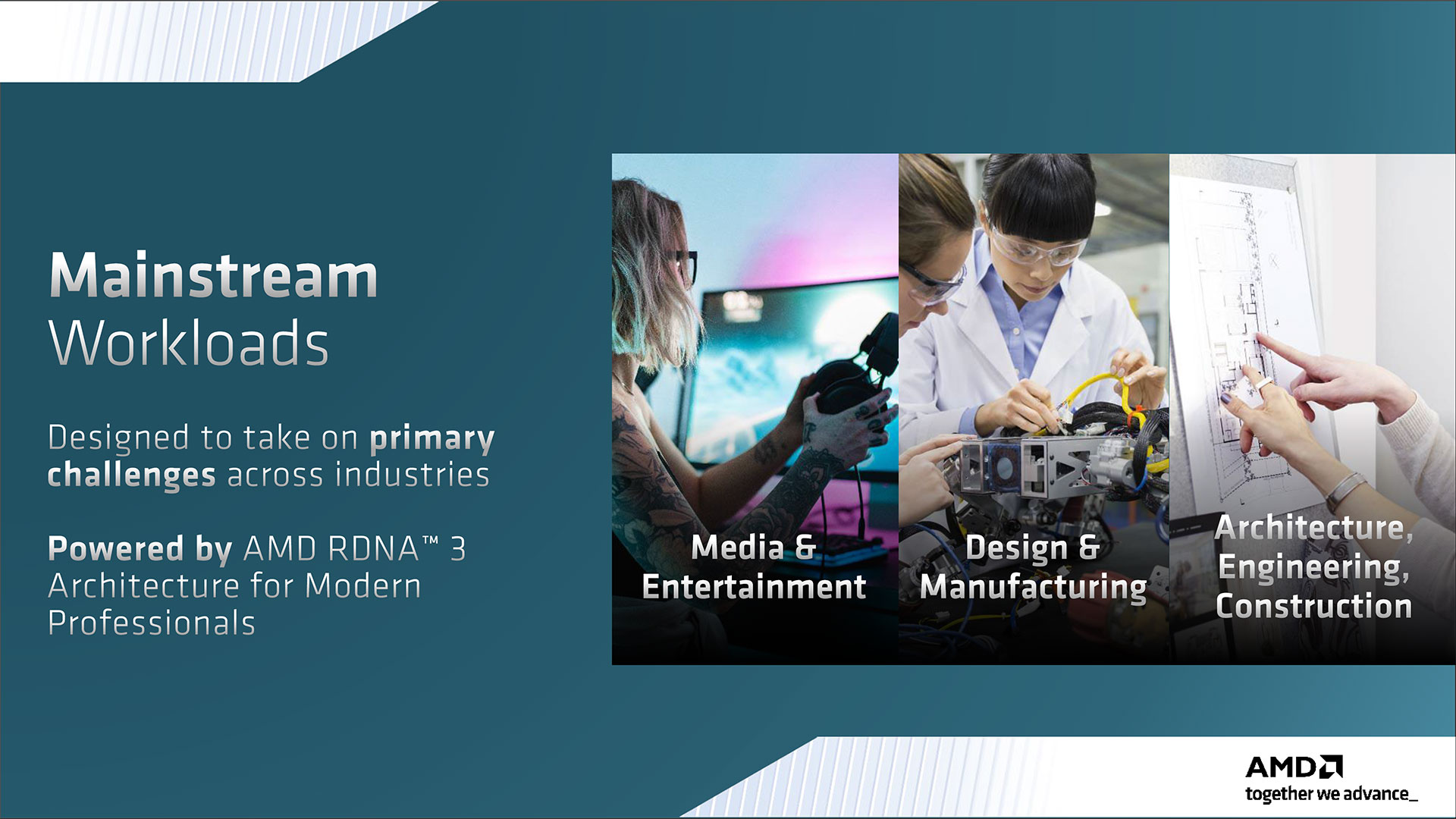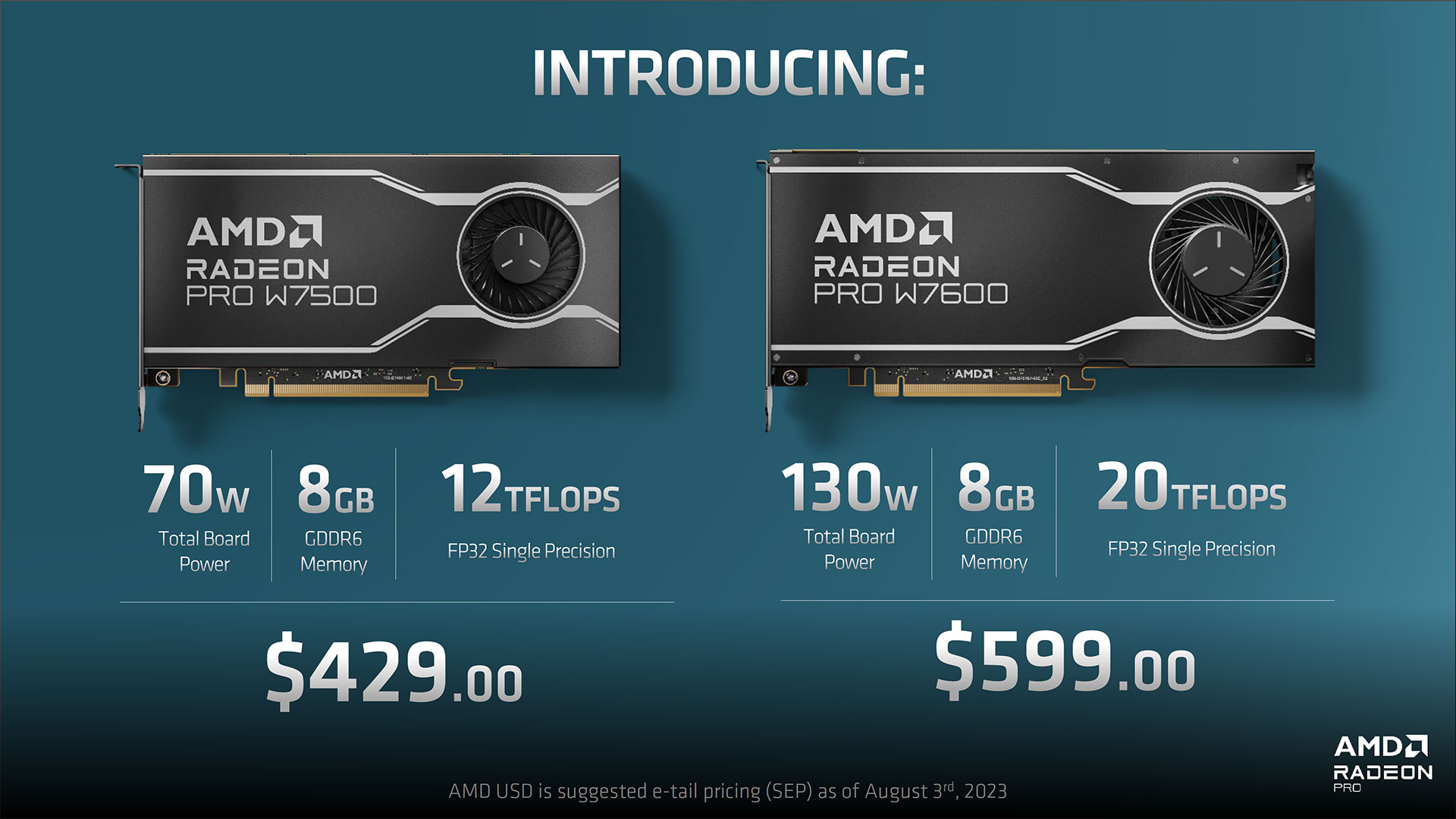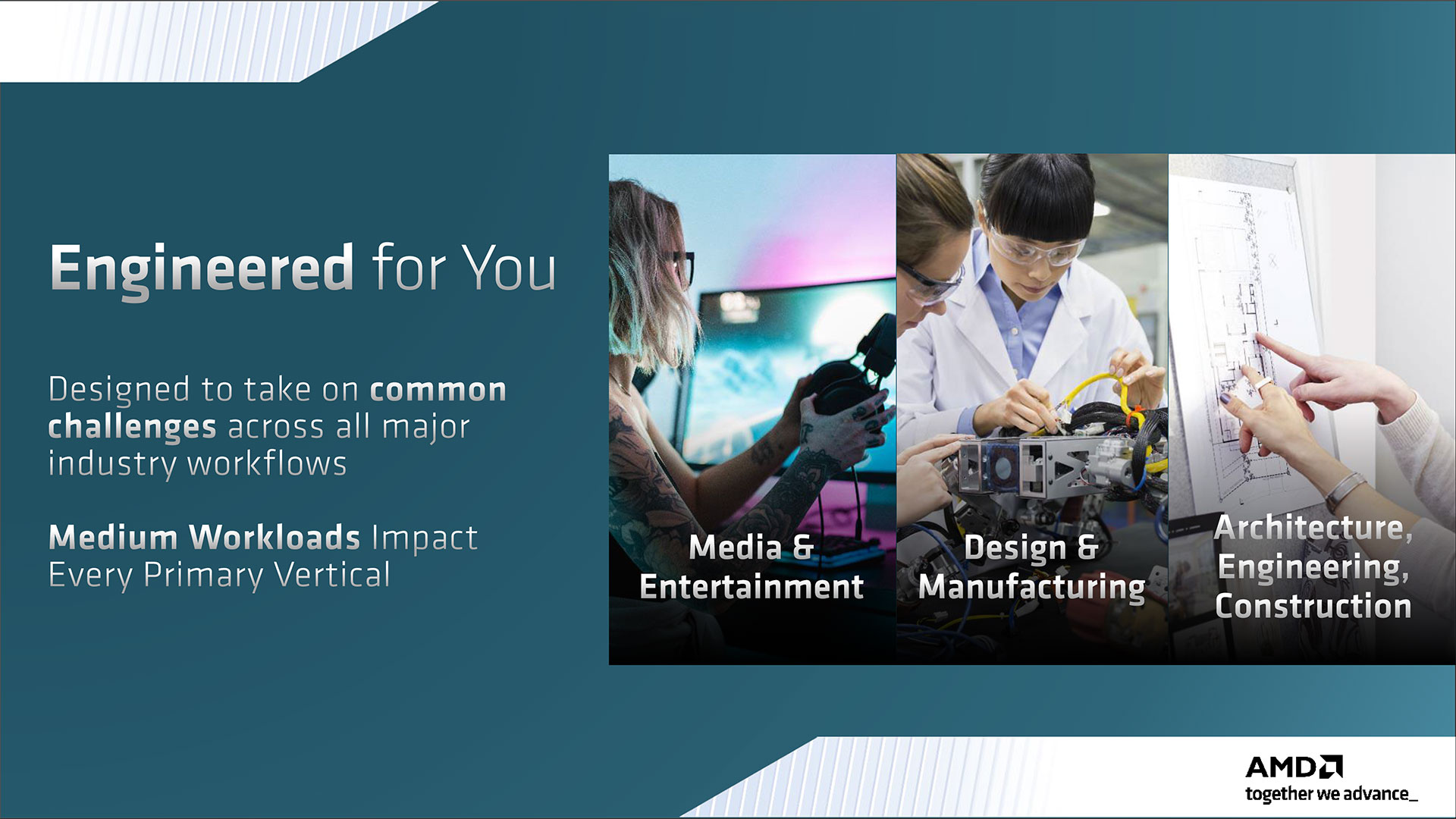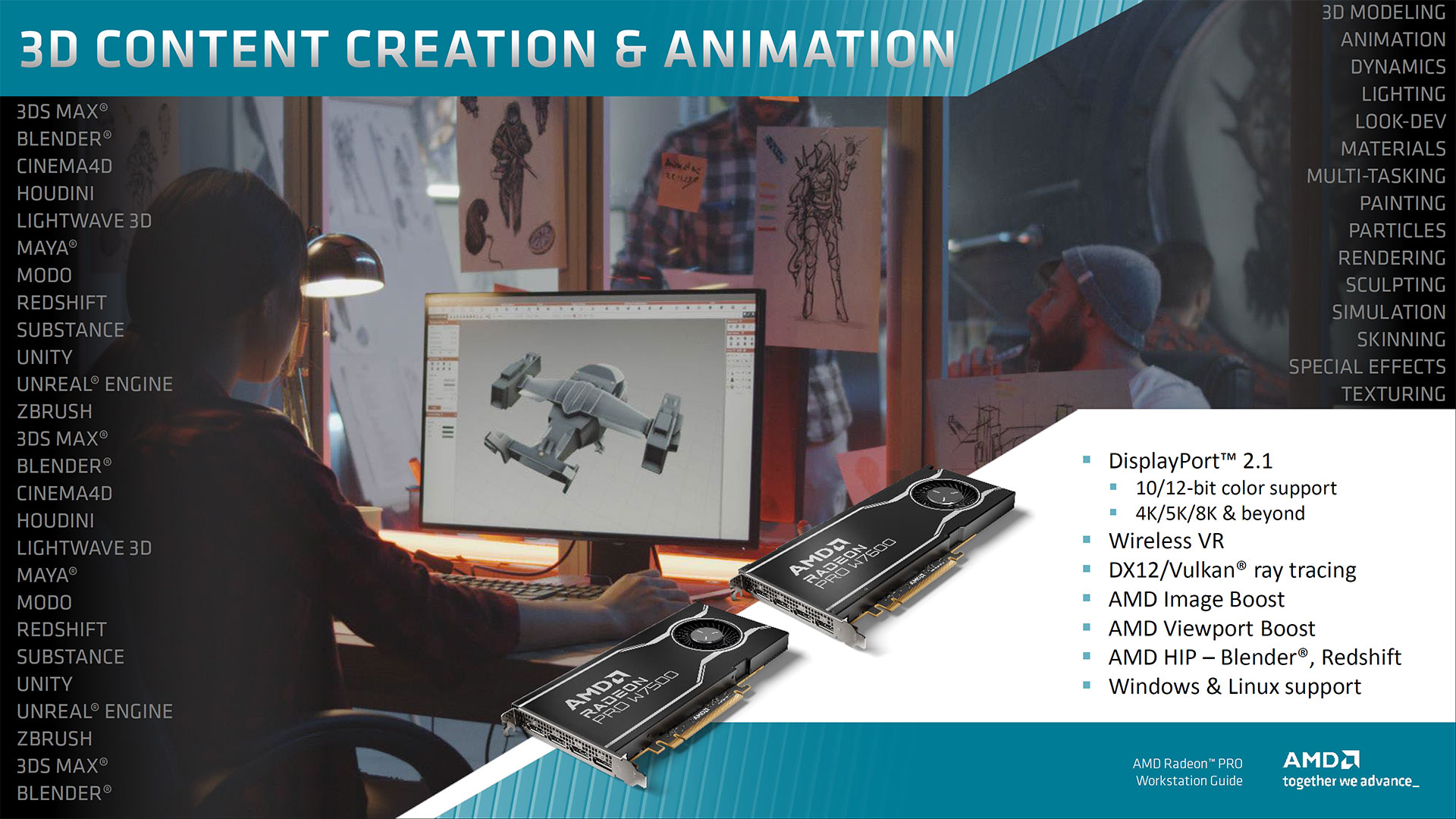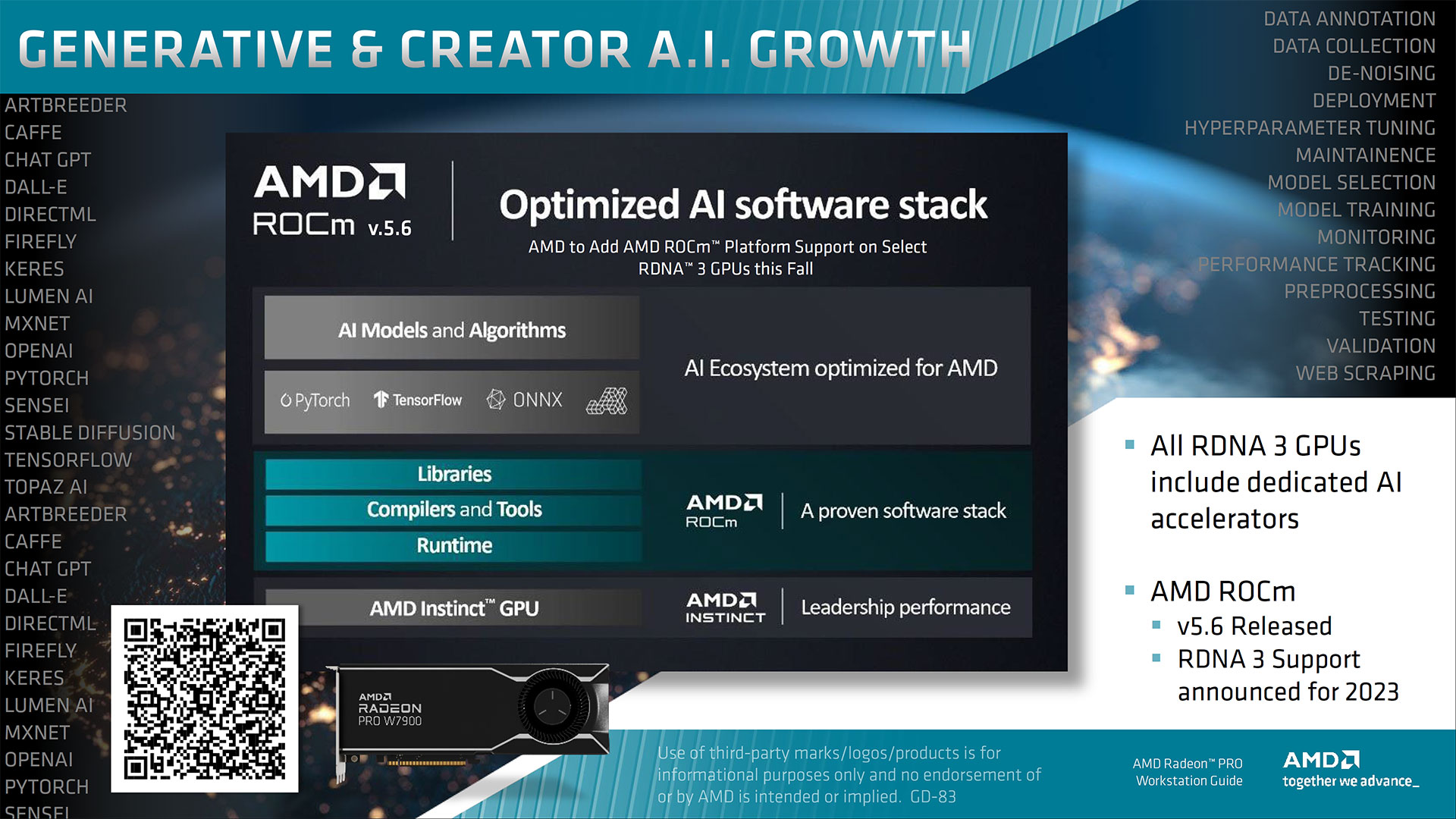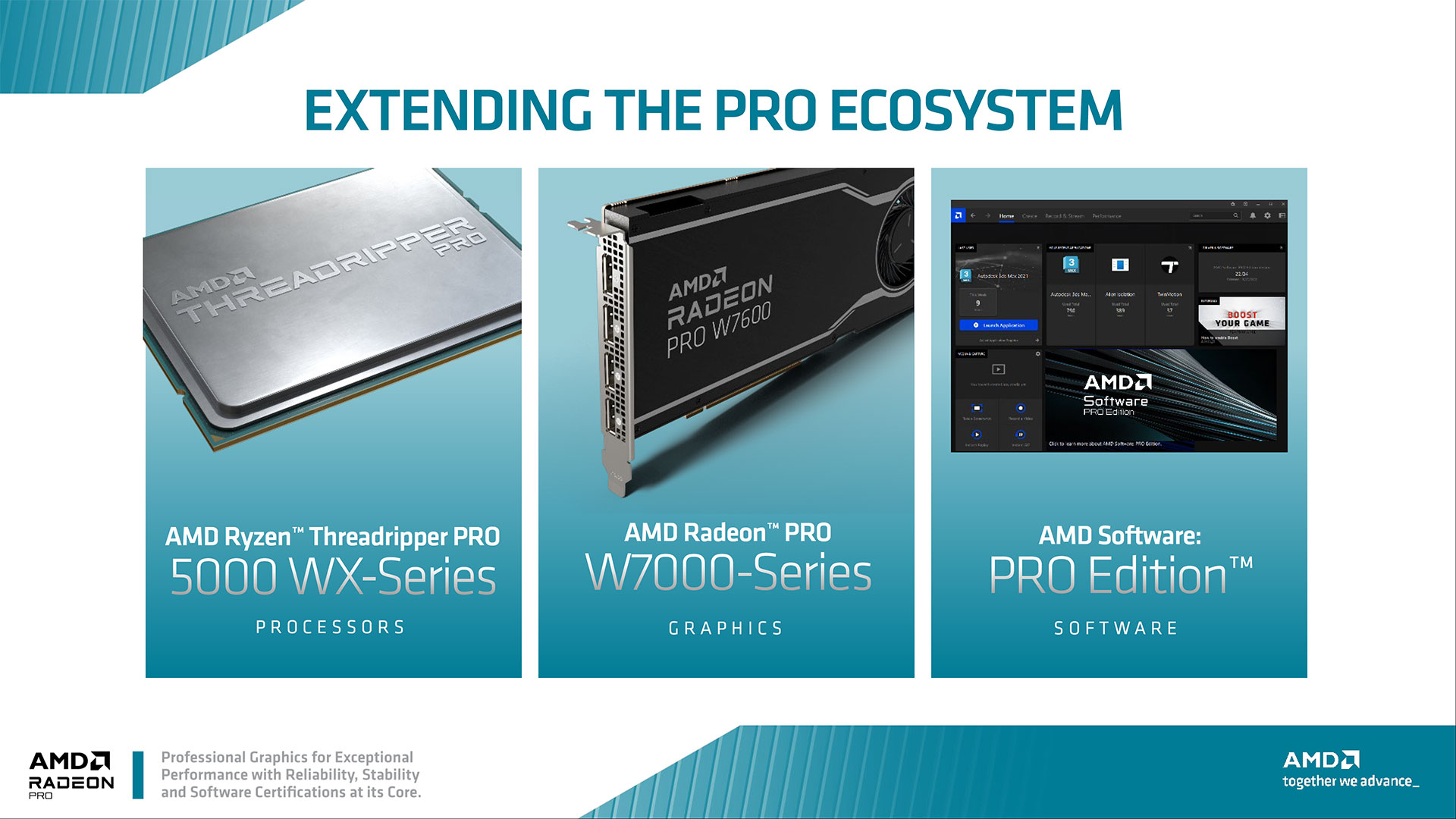
AMD has announced two brand new RDNA 3 workstation GPUs today known as the Radeon Pro W7600 and Radeon Pro W7500. These new GPUs are aimed at the entry-level market arriving with single-slot cooling solutions. They use the Navi 33 die, with 8GB of GDDR6 memory on a 128-bit interface — just like the Radeon RX 7600. The difference is in the drivers and a few other aspects, as well as the TBP (total board power) and cooling.
Both new workstation GPUs come with AMD's latest feature set from the RDNA 3 architecture. That means AV1 encode and decode, enhancements to the compute units (CUs), and DisplayPort 2.1 outputs. Note that unlike the Radeon Pro W7900 and W7800, the W7600 and W7500 feature up to UHBR10 (ultra hit bitrate 10 Gbps) video outputs. The consumer RX 7000-series has UHBR13.5 support (up to 54 Gbps total), while the top workstation GPUs have UHBR20 support (up to 80 Gbps).
The W7600 is the faster card of the two. Specs include a full Navi 33 die with 32 CUs, 64 AI accelerators, 8GB of 18 Gbps GDDR6 memory, a 128-bit wide memory interface, and a 130W power rating. As previously mentioned this model features a single-slot cooling solution that will make it easy to integrate into any system, no matter how big or small it might be. It has a single 6-pin power connector.
The W7500 is the lowest-level card in AMD's RDNA 3 workstation portfolio right now. It comes with the same Navi 33 die as the W7600 but with fewer cores and a slower memory subsystem. Specs include 28 CUs, 56 AI Accelerators, 8GB of 11 Gbps GDDR6 memory, a 128-bit memory bus, and a 70W power rating. Thanks to its extremely low power rating, the W7500 operates without any supplemental power connectors, which means it can slot into systems with less-capable power supplies. It also comes with a slightly shorter single-slot cooler that will help case compatibility even more.
As mentioned above, both the W7600 and W7500 have DisplayPort 2.1 UHBR 10 support, which enables both GPUs to support extremely high refresh rates and resolutions. Both GPUs are capable of running up to four 8K 120Hz or 10K 60Hz displays with Display Stream Compression, or up to four 6K 60Hz panels without
compression.
Technically, UHBR10 ends up with slightly lower bandwidth than HDMI 2.1 (48 Gbps), but it's a big upgrade over DisplayPort 1.4a's HBR3 (32.4 Gbps). There are different encoding schemes, so UHBR10 has a maximum data rate of 38.79 Gbps with 128b/132b encoding, HBR3 has a maximum data rate of 25.92 Gbps with 8b/10b encoding, and HDMI 2.1 has a max data rate of 42 Gbps with 16b/18b encoding.
Since these cards are also workstation cards, they get access to AMD's pro drivers that are optimized for non-gaming productivity-based applications. You can still run games and other graphics applications on them, but they're primarily for professional content creation — you get less raw performance for a higher price than the consumer Radeon parts.

Radeon Pro W7600 and Radeon Pro W7500 Specifications
Here you can see the specifications for the W7600 and W7500, along with the previous generation W6600. The specs leaked already, but everything is now officially confirmed by AMD, including pricing. AMD also provided some of its own benchmarks, comparing the Radeon Pro cards with their Nvidia counterparts.


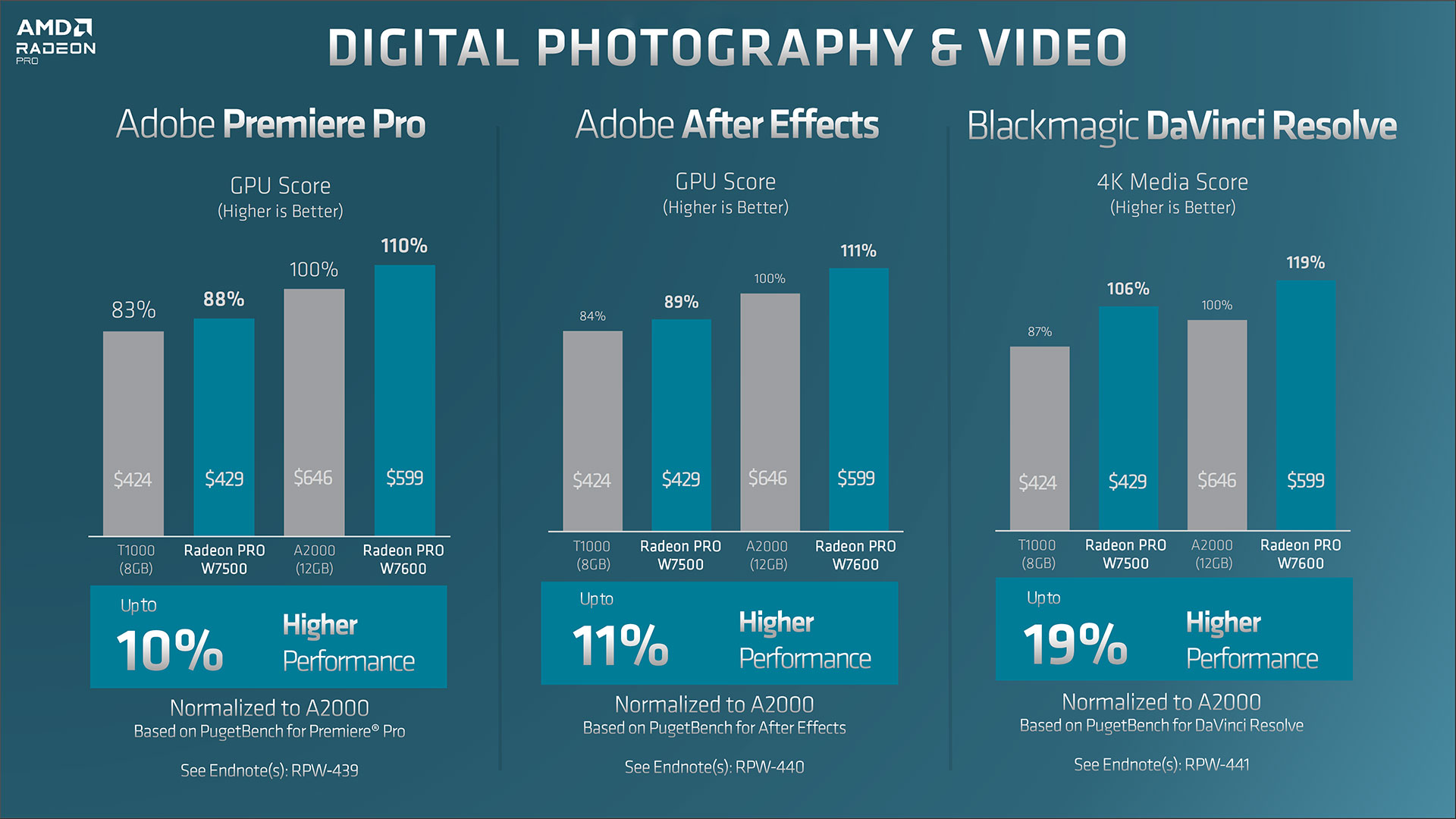

According to the AMD-provided benchmarks, the Radeon Pro W7600 offers up to 19% higher performance than the Radeon Pro W6600. The Radeon Pro W7500 is 17% slower than the Radeon Pro W6600.
AMD also compared the latest Navi 33 to their equivalent Nvidia rivals across 3D content creation, animation, 3D CAD, and visualization workloads. According to the chipmaker, the Radeon Pro W7600 provides professionals with better performance than the Nvidia RTX A2000 (Ampere), whereas the Radeon Pro W7500 outperforms the Nvidia T1000 (Turing).
Pricing-wise, the Radeon Pro W7600 will hit the market at $599, $50 less than the Radeon Pro W6600 while offering higher performance. AMD's Radeon Pro W7600 thus outpaces the RTX A2000, is $47 cheaper. Meanwhile, the Radeon Pro W7500 will retail for $429, representing only a $5 saving over the T1000.
While AMD has now officially announced the Radeon Pro W7600 and W7500, the retail availability of the cards is listed as "Q3, 2023." For OEMs and system integrators, you can expect to see options for the new GPUs appear in the coming months, with online sales of just the cards before the end of September.
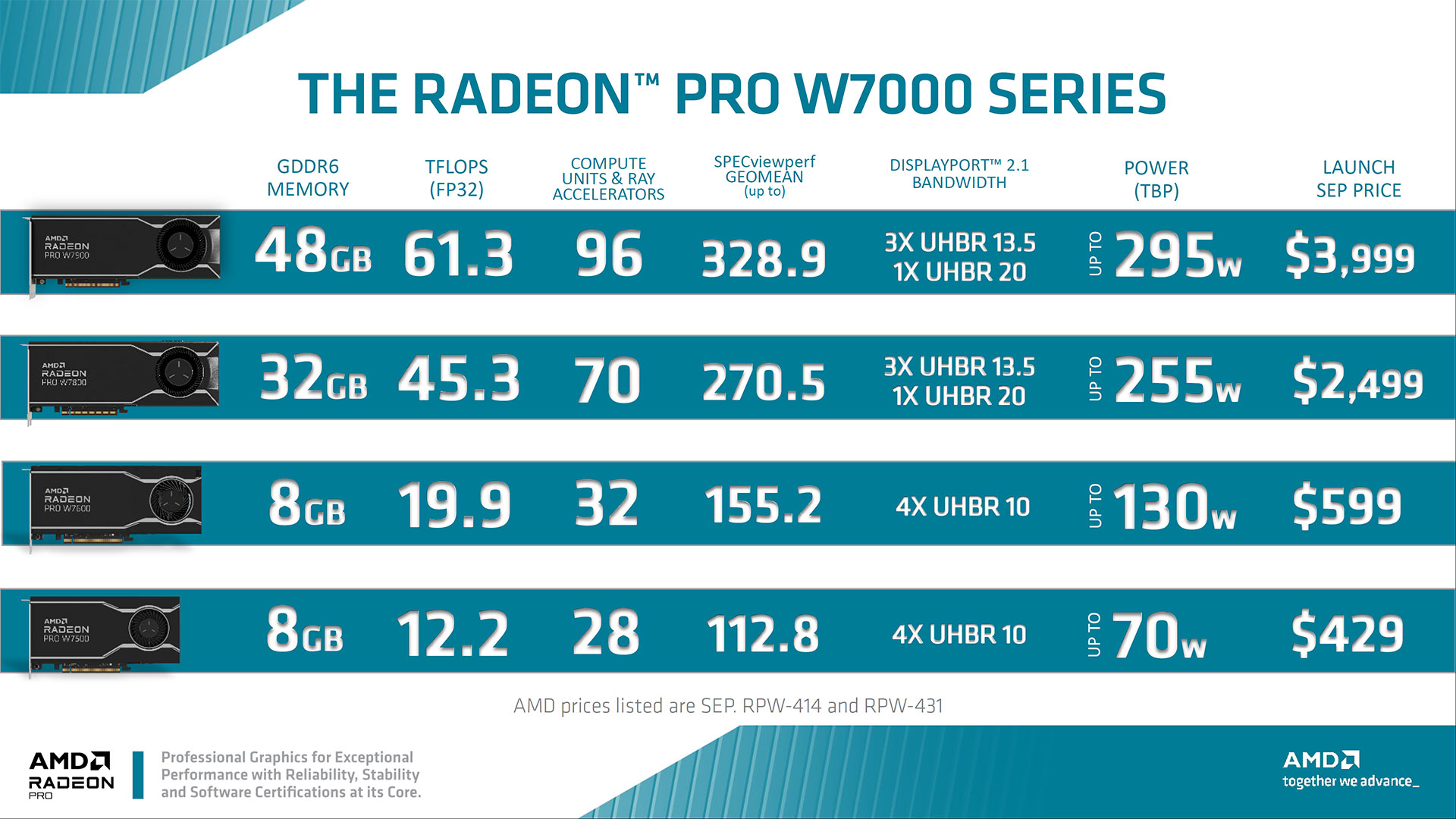
Here's the rundown of the entire Radeon Pro stack as it currently stands. The W7900 uses Navi 31 with a fully enabled die, while the W7800 drops that down to 70 CUs with a lower power limit. Note that for both of those, UHBR20 support is limited to a single DisplayPort, while the others are UHBR13.5 rated.
AMD's prices have also gone up compared to previous generations, as the hardware has become more capable and competitive, though Nvidia's top RTX 6000 Ada Generation still costs substantially more, with a $6,800 MSRP.
The full slide deck provided by AMD is below, for your reference.






